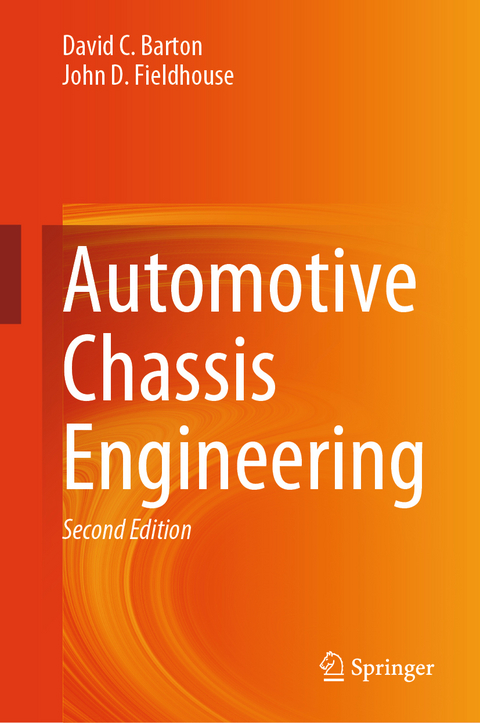
Automotive Chassis Engineering
Springer International Publishing (Verlag)
978-3-031-57525-9 (ISBN)
Professor David Barton was awarded a First Class Honours Bachelor's degree in Mechanical Engineering from the University of Bristol in 1974. After gathering industrial experience, he completed his M.Sc. in Applied Mechanics at the University of Manchester in 1978, followed by a Ph.D. in composite materials for pressure vessels in 1981. Prior to joining Leeds as a lecturer in 1985, Professor Barton had five years of experience as a structural analyst in the nuclear power industry mainly concerned with high temperature and aseismic assessment of reactor structures. His research interests at Leeds have centred around the experimental derivation and numerical implementation of complex models of material and structural behaviour, particularly in relation to high strain rate deformation (including crashworthiness of vehicles), durability assessment and tribological interfaces in automotive engineering (brakes, gearbox synchronisers) and biomedical applications (total artificial joints, impact biomechanics). John Fieldhouse was an apprentice-trained engineer with nearly 20 years experience in industrial Research and Development. He completed his B.Sc. (First Class Honours) degree at the University of Leeds and his Ph.D. at the University of Huddersfield. After entering academic life, he maintained his links with industry, completing some 23 "turnkey" design and development projects. His research was always industrially driven and he completed numerous automotive braking research projects with industrial partners. In his lifetime, he published over 150 journal and conference papers on brake noise, vibration and harshness (NVH), design, education and alternative fuels. During his career, he developed an advanced design studio/learning centre and conceived and developed an automotive research/teaching "centre of excellence." His 30 years of academic experience together with his continuous industrial collaborations, allowed him to develop a unique teaching approach based on "learning by doing" for which he was awarded a UK National Teaching Fellowship in 2008.
Vehicle Mechanics.- Steering Systems.- Suspension Systems & Components.- Noise, Vibration & Harshness (Nvh).- Chassis Structures.
| Erscheinungsdatum | 06.06.2024 |
|---|---|
| Zusatzinfo | XIV, 369 p. 301 illus., 178 illus. in color. |
| Verlagsort | Cham |
| Sprache | englisch |
| Maße | 155 x 235 mm |
| Themenwelt | Technik ► Fahrzeugbau / Schiffbau |
| Technik ► Maschinenbau | |
| Schlagworte | Automotive Steering Technologies • Chassis Structures • Chassis Textbook • NVH • Suspension Systems |
| ISBN-10 | 3-031-57525-3 / 3031575253 |
| ISBN-13 | 978-3-031-57525-9 / 9783031575259 |
| Zustand | Neuware |
| Haben Sie eine Frage zum Produkt? |
aus dem Bereich


